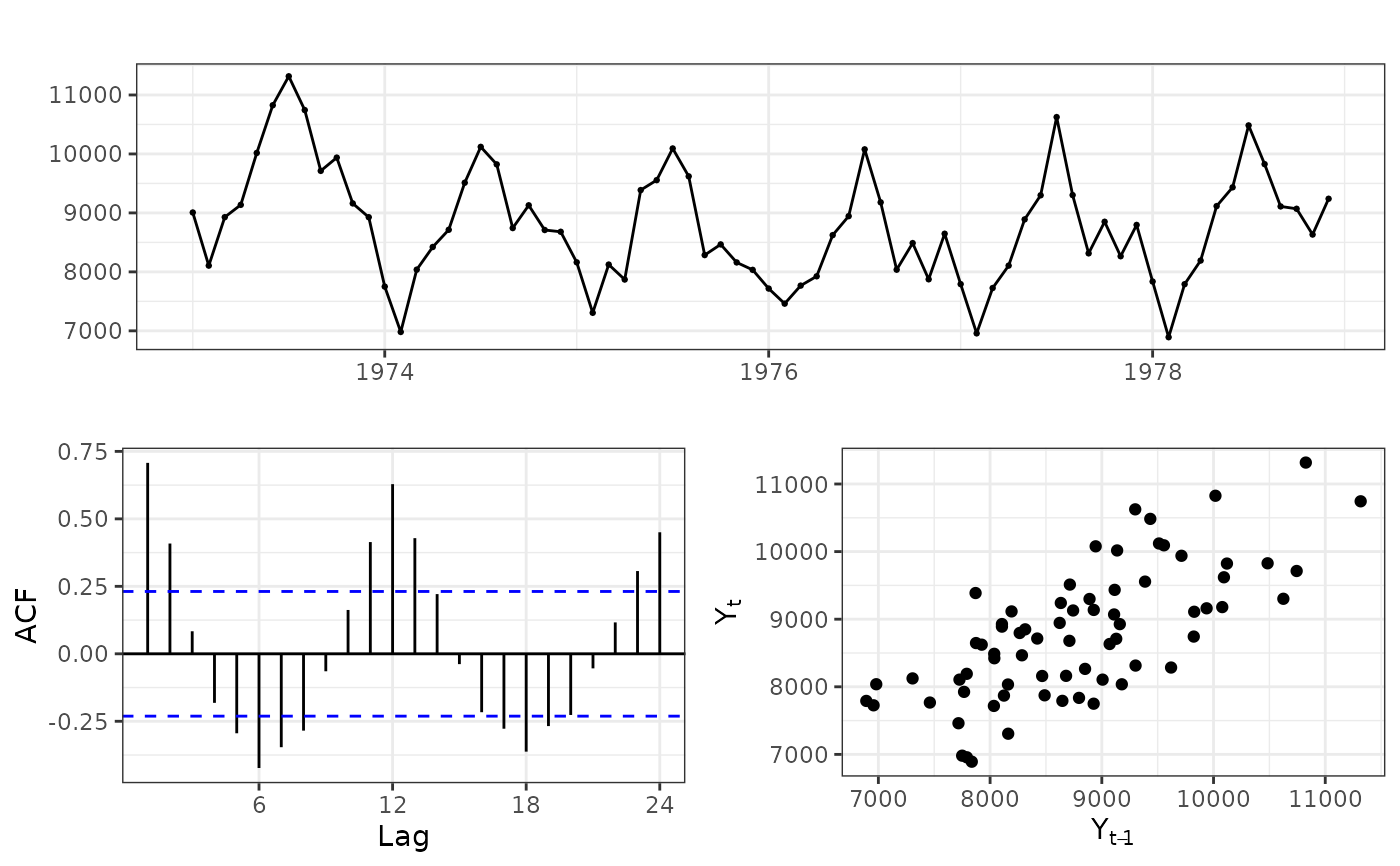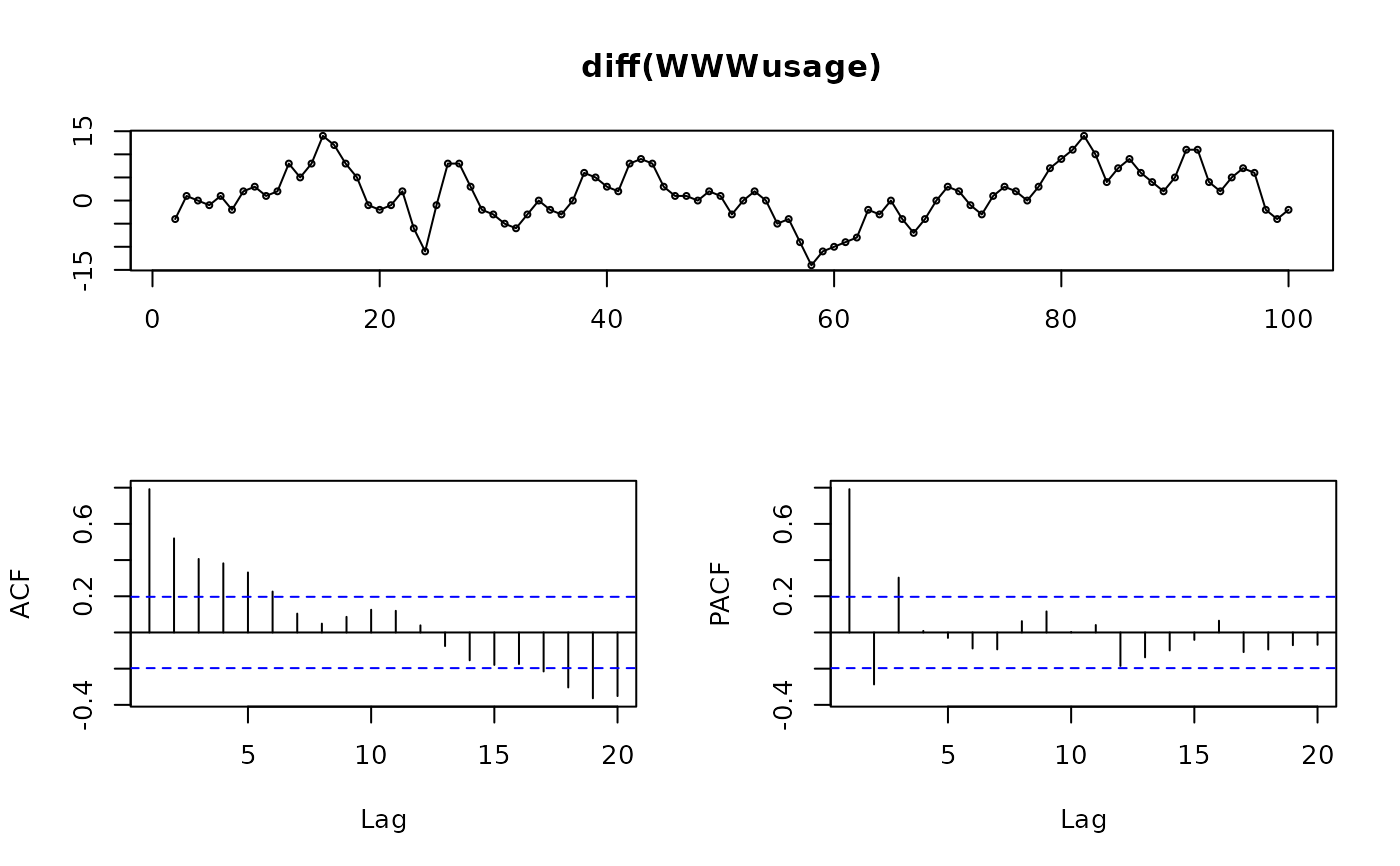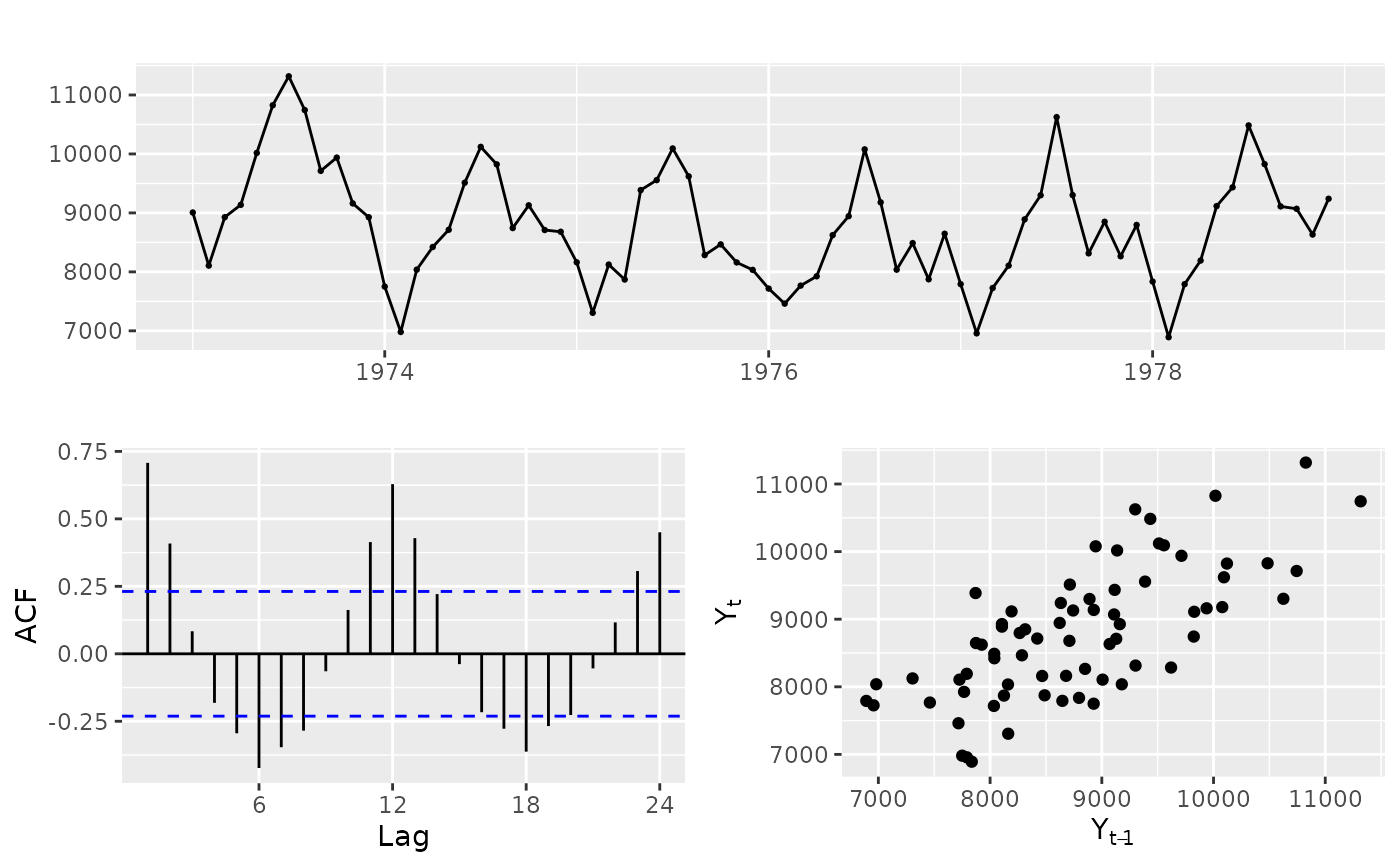Plots a time series along with its acf and either its pacf, lagged scatterplot or spectrum.
Usage
ggtsdisplay(
x,
plot.type = c("partial", "histogram", "scatter", "spectrum"),
points = TRUE,
smooth = FALSE,
lag.max,
na.action = na.contiguous,
theme = NULL,
...
)
tsdisplay(
x,
plot.type = c("partial", "histogram", "scatter", "spectrum"),
points = TRUE,
ci.type = c("white", "ma"),
lag.max,
na.action = na.contiguous,
main = NULL,
xlab = "",
ylab = "",
pch = 1,
cex = 0.5,
...
)Arguments
- x
a numeric vector or time series of class
ts.- plot.type
type of plot to include in lower right corner.
- points
logical flag indicating whether to show the individual points or not in the time plot.
- smooth
logical flag indicating whether to show a smooth loess curve superimposed on the time plot.
- lag.max
the maximum lag to plot for the acf and pacf. A suitable value is selected by default if the argument is missing.
- na.action
function to handle missing values in acf, pacf and spectrum calculations. The default is
stats::na.contiguous(). Useful alternatives arestats::na.pass()andna.interp().- theme
Adds a ggplot element to each plot, typically a theme.
- ...
additional arguments to
stats::acf().- ci.type
type of confidence limits for ACF that is passed to
stats::acf(). Should the confidence limits assume a white noise input or for lag \(k\) an MA(\(k-1\)) input?- main
Main title.
- xlab
X-axis label.
- ylab
Y-axis label.
- pch
Plotting character.
- cex
Character size.
References
Hyndman and Athanasopoulos (2018) Forecasting: principles and practice, 2nd edition, OTexts: Melbourne, Australia. https://otexts.com/fpp2/



